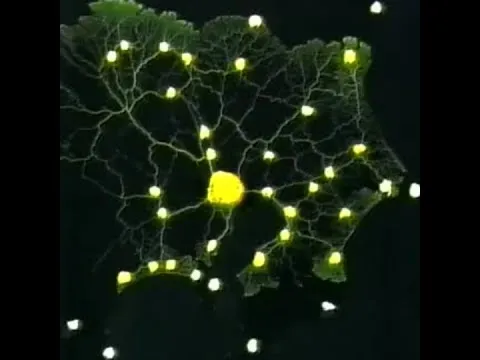But what if you take away the neurons?
Most life forms on Earth lack neurons, and yet they frequently manage to behave in complex ways. Previously, we have chalked this up to innate responses refined over generations, but it is beginning to look as if some of these humble non-neural organisms can actually learn. While that’s left some scientists scratching their heads, others are busy investigating how this ability could offer new approaches to fighting diseases and designing intelligent machines.
Take a slime mould. It certainly doesn’t look smart. This unusual creature, which is not a plant, animal or fungus, often resembles a glob of lemon curd that has fallen on the floor. Really, this manifestation is just one stage in the slime mould’s life, formed when many single cells, each with their own distinct DNA, mingle and fuse. The resulting yellow blob can grow to a few square metres, and is just one enormous cell containing thousands of nuclei.
In nature, a slime mould relies on chemical receptors on its surface to sense substances in its path as it creeps along the forest floor. If it gets a whiff of something attractive, like food, it will rapidly pulsate, pushing itself closer to the source.
To continue reading this premium article, subscribe for unlimited access.Existing subscribers, please log in with your email address to link your account access.
Author:Erica Tennenhouse
